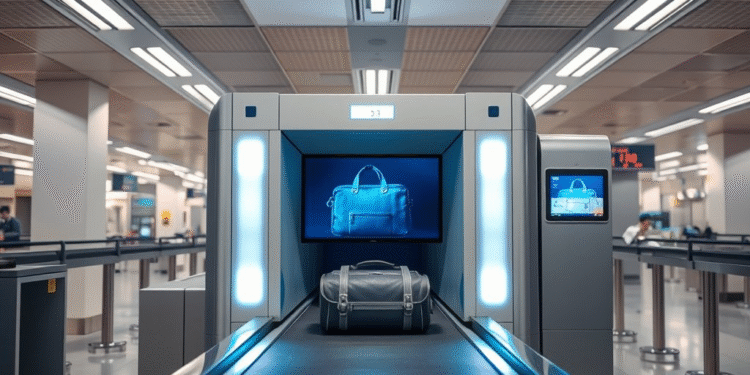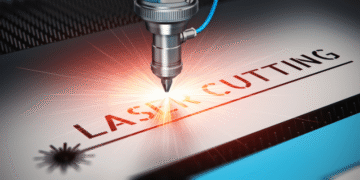The introduction of innovative technologies has transformed the way security personnel screen luggage and passengers at airports. Among these advancements, X-ray machine technologies stand out as critical tools in enhancing security measures while improving passenger experience. This article explores the key advancements in airport security through the lens of innovative X-ray machine technologies.
The Need for Enhanced Security Measures
The September 11 attacks in 2001 prompted a significant overhaul of airport security protocols around the world. This led to the implementation of stricter screening processes for both passengers and baggage. As aviation threats have evolved, so too have the technologies employed to combat them. Among the various security measures, X-ray machines play a crucial role in detecting concealed weapons, explosives, and other prohibited items in carry-on and checked luggage.
Traditional X-ray machines, which have been utilized for decades, primarily focused on generating 2D images of the contents within bags. However, these machines often struggled with complex screening scenarios, especially when it came to differentiating between benign and suspicious items. The need for more sophisticated detection capabilities has driven the development of advanced X-ray technologies that enhance security efficacy and operational efficiency.
Multi-Energy X-Ray Technology
One of the most significant advancements in X-ray machine technology is the introduction of multi-energy X-ray systems. Unlike traditional machines that use a single energy level to penetrate objects, multi-energy systems utilize multiple energy levels to generate images with greater detail. By assessing how different materials absorb X-rays at various energy levels, these machines can create more accurate representations of the contents of bags.
This technology allows security personnel to distinguish between organic materials, metals, and plastics with enhanced precision. For example, it becomes easier to identify explosive components made from organic materials, which are often challenging to detect with conventional equipment. The ability to provide detailed color-coded images further aids operators in quickly identifying suspicious items, reducing the likelihood of human error during the screening process.
3D Imaging and Tomography
Another groundbreaking advancement is the adoption of 3D imaging and computed tomography (CT) for airport X-ray machines. This technology offers security personnel a comprehensive view of the contents within luggage by generating three-dimensional images that can be rotated and examined from various angles. The ability to visualize the interior of bags in 3D not only enhances threat detection but also allows for a more nuanced understanding of the items being screened.
CT scanners work by capturing multiple X-ray images from different angles and using advanced algorithms to reconstruct a 3D model of the bag’s contents. This innovation significantly improves detection rates for concealed weapons and explosives, as it reduces the chances of false positives and false negatives. Furthermore, with the implementation of automated detection algorithms, these systems can assist operators by flagging potential threats, thereby expediting the screening process while maintaining high security standards.
Integration with Artificial Intelligence
The integration of artificial intelligence (AI) into airport X-ray machine technologies marks another significant leap forward in enhancing security. AI algorithms can analyze X-ray images more rapidly and accurately than human operators, learning from vast datasets to identify patterns associated with prohibited items. By employing machine learning techniques, these systems continually improve their detection capabilities, adapting to emerging threats and evolving tactics used by potential adversaries.
AI-driven X-ray machines not only enhance threat detection but also streamline the overall screening process. By automating the analysis of images, security personnel can focus their attention on high-risk bags flagged by the system, thereby reducing congestion in screening areas and improving passenger flow. This technology ultimately contributes to a more efficient and user-friendly airport experience while maintaining stringent security measures.
Improving Passenger Experience
In addition to enhancing security, innovative X-ray machine technologies also prioritize passenger convenience. Traditional screening processes often involve labor-intensive manual inspections, leading to longer wait times and increased frustration among travelers. Advanced X-ray machines equipped with automated detection capabilities and user-friendly interfaces help alleviate these challenges.
With the ability to quickly and accurately screen baggage, modern X-ray machines minimize the need for secondary inspections and allow for a smoother flow of passengers through security checkpoints. Some systems even incorporate features such as automatic bag handling and faster processing speeds, reducing the time passengers spend in lines. By improving the efficiency of the screening process, airports can enhance the overall travel experience while maintaining robust security measures.
Future Outlook
As airports continue to adapt to the evolving landscape of air travel and security threats, the role of innovative X-ray machine technologies will remain central to bolstering safety measures. Ongoing research and development efforts will likely yield even more advanced detection capabilities, such as the potential integration of biometric screening and advanced imaging techniques.
Collaboration between governments, airport authorities, and technology developers will be essential in fostering the adoption of these transformative solutions. By working together, stakeholders can ensure that airports remain secure and resilient in the face of emerging threats while also prioritizing passenger convenience and satisfaction.
In conclusion, the advancements in airport security through innovative X-ray machine technologies have significantly transformed the way security personnel screen luggage and passengers. From multi-energy systems to 3D imaging and AI integration, these technologies enhance both security efficacy and passenger experience. As the aviation industry continues to evolve, the commitment to adopting cutting-edge security solutions will be crucial in ensuring safe and efficient air travel for all.













